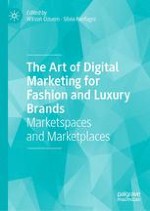2021 | OriginalPaper | Buchkapitel
12. Building a Sustainable Brand Image in Luxury Fashion Companies
verfasst von : Monica Faraoni
Erschienen in: The Art of Digital Marketing for Fashion and Luxury Brands
Verlag: Springer International Publishing
Aktivieren Sie unsere intelligente Suche, um passende Fachinhalte oder Patente zu finden.
Wählen Sie Textabschnitte aus um mit Künstlicher Intelligenz passenden Patente zu finden. powered by
Markieren Sie Textabschnitte, um KI-gestützt weitere passende Inhalte zu finden. powered by
